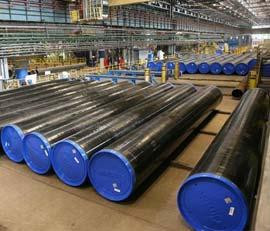Benefits of Nickel Alloy plates
Various industries such as aircraft, chemical, oil and gas, and power coms use nickel-based plates sheets, bars, pates, and almost everything made from nickel. One of the critical properties of nickel-based plates such as Inconel 600 Plate, Hastelloy C276 Plate, and Monel 400 Plate for such wide use is that they show superb resistance against oxidation and high-temperature.
Nickel alloys are often made by fusing chromium, titanium, copper, and molybdenum and such fusions often provide enhanced corrosive strength.
Such superalloys are multiple times stronger than regular stainless steel or copper tubes. Due to their high-temperature bearing and low- reactivity properties nickel-based plates are extremely useful in hot environments, for example, the power generation industry or in the aviation industry.
Nickel alloy plates are often preferred to Copper or Iron plates and copper tubes for electronic and special engineering use. However, Nickel alloys with copper such as Monel 400 are used in the marine industry for its sustained reactivity in seawater.
Nickel-alloy plates also offer solid core-strength and are highly ductile as well as easy to fabricate, allowing the use of cheaper welding methods when assembling piping systems.
INCONEL 600 plate
Inconel 600 plate is a nickel-chromium alloy highly suitable for applications that are subject to high-temperature and corrosion and works well in environments where the temperature ranges up to 2000° F.
In addition, these plates are highly non-magnetic in nature, displays excellent strength properties, and are easy to weld in all sorts of temperatures.
As nickel is anti-reductive in nature these plates are highly resistive to reducing environments such as alkaline solutions. Typically Inconel 600 plates are used in the Chemical industry, Aerospace industry, papermaking industry, Food Processing, and energy-producing industries.
Hastelloy C276 Plate
Hastelloy C276 plate is a nickel-molybdenum-chromium superalloy with a very low amount of tungsten presence in it. Large amount nickel and molybdenum contents make these nickel-steel alloy plates less reactive to reducing substances whereas the chromium presence works against the corrosion due to oxidizing media.
Today, there are several variations of the Hastelloy nickel alloy in the market, however, the Hastelloy C-276 plates, bars, or sheets are a widely used variant of this alloy.
Alloy C-276 is highly effective in severe conditions such as chemical processing, pollution check, paper production, waste management and treatment plants, and recovery of natural gas that are highly reactive.
Monel 400 Plate
Monel 400 plates generally have Ni and Cu in a 67% to 23% ratio, hence, such high presence of Nickel makes this alloy resistive to most caustic solutions.
Monel 400 plate is present as a solid solution alloy initially that is hardened later by cold working. Both copper and nickel present are insusceptible to hydrochloric and hydrofluoric acids which is why these plates are often used in Brackish waters. However, due to the presence of such a large amount of copper these plates are sensitive to nitric acid and ammonia.
Monel 400 plates, bars, or sheets have a very high melting point in the range of 2370-2460° F, and also retain most of their properties in freezing temperatures as well. However, Monel 400 is low in strength as compared to other nickel alloys we talked about.

Comments
Post a Comment